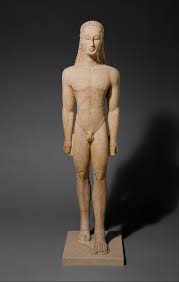Humanism is an overall shift to the idea of what humans are capable of and can produce, rather than relying and basing argument on divine or supernatural factors. This was a shift in mindset, practices, and certainly artwork. A major factor in developing the humanistic ideology was the Greek gods and goddesses. Greeks identified that their gods had flaws and faced issues that mortal beings faced. As a result, it allowed the individuals to resonate more with the gods, but also rely less on gods and more on their own capabilities. Greek and Roman artwork greatly illustrates humanism when compared with ancient Egyptian and Mesopotamian artwork. To begin with, Greek and Roman artwork are much more detailed than Egyptian and Mesopotamian. Greek and Roman sculptures had a more realistic appearance and looked like an actual person one could recognize. There was more emphasis on the face with distinct facial features and expressions, but also details in places one wouldn’t pay attention to right away such as fingers, feet, muscles, and posture.
To illustrate the difference, an example of Egyptian art is Anubis and mummification. Anubis was the jackal-headed god of embalming that watched over the dead. This is a good example in comparison to Greek and Roman artwork because it’s 2 dimensional, so there is less room for detail as opposed to a sculpture. However, what the art represents is also a representation of Egyptian culture. The Egyptians were very focused on gods and religion and they would base their thinking on divine or supernatural power. By presenting art with a half-human half-jackal being who helps individual be closer their god, the art is employing divine features rather than humanistic.
An example of Greek art is Kroisos from Anavysos which was simply a human statue of a man. However, the detail included in the sculpture employs the elements of humanism. There was less focus on any divine or religious connection, and more emphasis on human features. Body parts such as fingers, toes, and muscles, as well as posture and expression all showed that this was an actual person who was most likely modeling for the artist. Nonetheless, humanism in this sculpture shows the differing ideals that the Greeks and Roman’s had compared to the Egyptians and Mesopotamians.


